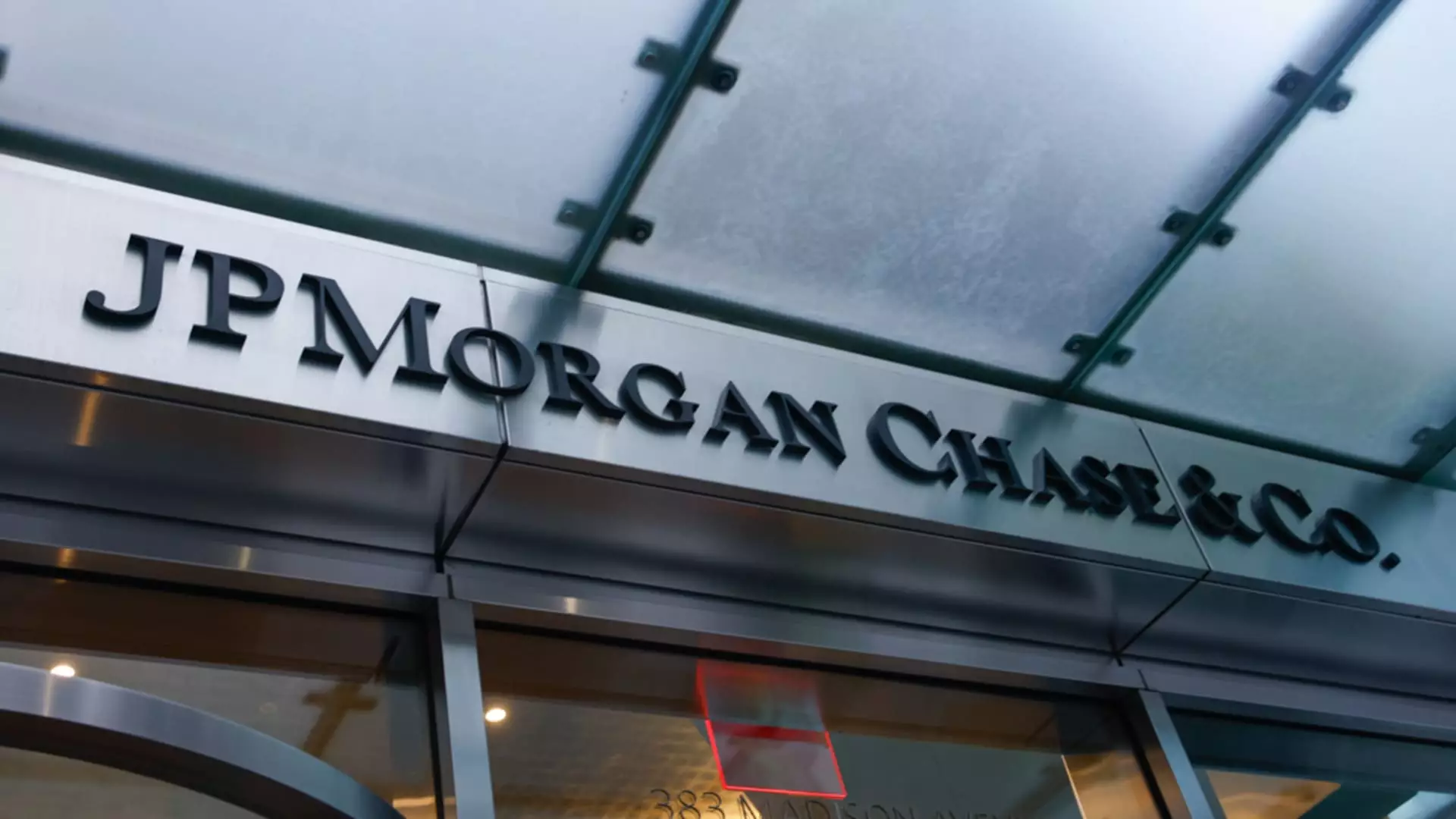3 Stark Warnings Behind the Overhyped Bank Stocks Rally

The recent surge in JPMorgan and Bank of America shares has been widely celebrated on Wall Street, but a deeper dive reveals that this enthusiasm might be dangerously misplaced. According to analyst David George from Baird, the current rally has pushed JPMorgan into what he calls “record valuations,” generating an unsustainable risk-reward profile. With JPMorgan’s forward price-to-earnings ratio ballooning to 15.5 and the stock trading at nearly three times its tangible book value, George’s forecast suggests an 18% downside — a clear signal that exuberance could soon give way to disappointment. Herein lies a glaring problem: investors often get swept up in momentum without critically assessing whether the price they pay today will be justified by future returns.
What’s happening with JPMorgan is a textbook case of valuation complacency. Despite undeniable strengths like robust capital reserves and diversified revenue streams, JPMorgan’s premium valuation leaves little room for error or unexpected economic risks. The market’s collective faith appears almost blind, ignoring that the law of large numbers and cyclical headwinds could slow earnings growth. In essence, investors are paying top dollar for greatness they’ve already received, a scenario historically fraught with corrections.
Bank of America: Caught in the Fair-Value Crossfire
Bank of America, by contrast, presents a more nuanced picture. Having gained roughly 8% year-to-date and nearly 12% over the past three months, Baird’s downgrade to a neutral stance stems from the fact that Bank of America now largely embodies a “fair-value” proposition. The important distinction is that although the bank benefits from improving net interest margins and a healthier capital markets environment, these positive factors appear fully priced in. George’s analysis acknowledges the bank’s solid fundamentals, yet cautions that the stock no longer offers a clear margin of safety or upside catalyst.
Here we confront a paradox: even when a stock is fundamentally sound, investors can be trapped by the limits of valuation expansion. Bank of America seems to occupy a plateau, where the combination of macro tailwinds and solid execution are insufficient to justify further meaningful gains. This creates a challenging investment environment, especially for those hoping for outsized returns. Caution is prudent, not skepticism, as this is the kind of equilibrium stage all growth cycles eventually reach.
Why Wall Street’s Bullish Consensus May Be Misguided
Despite these sober assessments, the majority of Wall Street analysts remain bullish — a reality that should raise eyebrows. With approximately half rating JPMorgan as a strong buy or buy, and an even larger majority expressing the same sentiment on Bank of America, a disconnect is glaring. This herd mentality is problematic because it assumes that the current economic backdrop and regulatory tailwinds will indefinitely propel bank shares higher.
The risk is that many analysts may be overly reliant on historical growth trajectories and favorable macro conditions, discounting the possibility of tightening monetary policies, geopolitical uncertainties, or regulatory shifts that could disrupt profits. Moreover, large institutional ratings often influence retail investors, creating feedback loops where elevated prices are justified by pervasive optimism rather than fundamental value.
As a center-right liberal observer, I view this episode as a cautionary tale against complacent investing driven by transient market narratives. Sound capitalism depends on disciplined valuation and an acknowledgment of risk factors, not blind allegiance to blue-chip names simply because they have performed well in recent years. Governments should foster environments that encourage both growth and realistic market appraisals, ensuring that the capital markets reward true value creation rather than mere momentum chasing.
The Price of “Best-in-Class” Franchises
Finally, the notion that JPMorgan is “best-in-class” cannot be overstated — it’s a fortress bank with significant advantages. Yet this very strength can breed dangerous overconfidence among investors. George neatly captures this tension: the bank’s dominant market position makes it a popular pick, but it also means expectations are so elevated that any deviation from perfect execution could lead to sharp share price volatility.
For those willing to look beyond the immediate shine, this suggests patience may be necessary. The era of quick gains on mega-cap bank stocks might be fading; instead, investors might need to recalibrate their horizons, acknowledging that even industry giants can suffer setbacks when priced for perfection. The lesson here is clear — no business, no matter how robust, should be immune from valuation discipline.
In short, the current enthusiasm for JPMorgan and Bank of America seems more a reflection of market euphoria and historical reverence than a rational assessment of future return potential. Investors ignoring these “super high” expectations do so at their own peril, and as they say in finance, “The market can remain irrational longer than you can remain solvent.”





